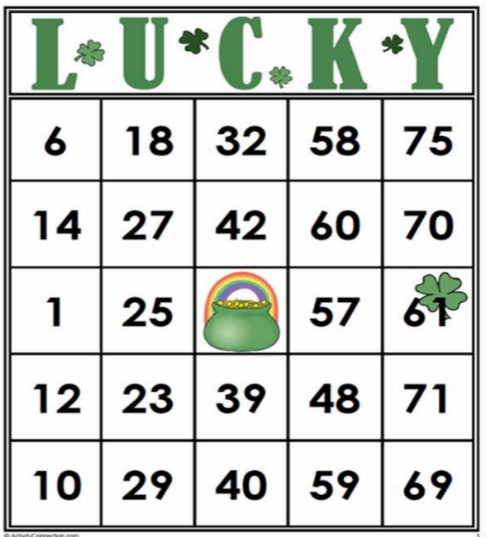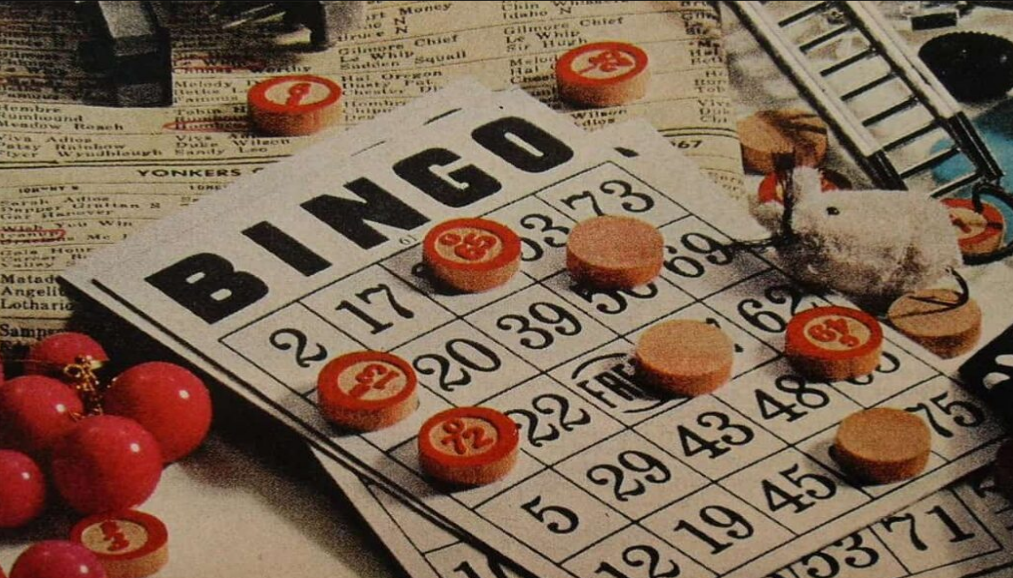No numbers always win in Bingo; each game’s outcome is random and unpredictable.
Introduction
Bingo is a game of chance, deeply rooted in many cultures with a rich history dating back several centuries. Often regarded as a communal game, it finds its place in local halls, charity events, and even online platforms. Within this introduction, we’ll delve deeper into the basics of Bingo and explore the very concept of “winning numbers.”

Brief Overview of Bingo
Bingo is a game where players have cards with numbers on them and try to match these numbers with those called out by a game host. Originating from Italy in the 16th century, it quickly spread to other parts of Europe and then to America, undergoing numerous transformations along the way. Now, it exists in various formats, from traditional Bingo to its American counterpart and even digital versions on online platforms.
The game’s primary objective remains consistent: complete a specific pattern or line on your card before anyone else. Patterns can range from simple horizontal or vertical lines to more complex designs.
The Concept of Winning Numbers
When discussing “winning numbers” in Bingo, it’s crucial to understand that every draw is random. Players often have personal beliefs or superstitions, thinking certain numbers are “luckier” than others. A quick search would reveal countless strategies and beliefs regarding which numbers are more likely to be called, but mathematically, each number has an equal chance.
Given the unpredictability, the concept of “winning numbers” is more psychological than factual. Some players might feel the number “7” is lucky because they won a game when many 7s were called or perhaps because they were born on July 7th. Yet, from a probability standpoint, every number from 1 to 75 (or 90, depending on the version of the game) has the same likelihood of being drawn.
The Mechanics of Bingo
Bingo’s appeal lies not only in its simplicity but also in its intricate mechanics, which bring together a blend of randomness and player anticipation. Within this section, we’ll dissect these mechanics to understand Bingo’s seamless operation better.
The Bingo Card Layout
A typical Bingo card is a 5×5 grid, resulting in 25 squares. The columns of this grid are labeled with the letters ‘B’, ‘I’, ‘N’, ‘G’, and ‘O’, respectively, from left to right. Each column contains a specific range of numbers:
- B ranges from 1 to 15
- I spans 16 to 30
- N encompasses 31 to 45, with the center square typically being a “free space” or “wild card,” requiring no matching number.
- G extends from 46 to 60
- O wraps it up with 61 to 75.
However, in the UK version of Bingo, the card is different. It’s a 9×3 grid with numbers ranging from 1 to 90. Each row contains five numbers and four blank spaces.
The card’s layout plays a pivotal role in determining winning patterns, which can range from simple lines (horizontal, vertical, or diagonal) to more complex patterns like “postage stamp” or “four corners.”
How Numbers are Drawn
Drawing numbers in Bingo is a process steeped in anticipation.
In digital or online Bingo games, random number generators (RNGs) replace the physical drum and balls.
Despite the method, the excitement in Bingo remains consistent. Players eagerly wait, hoping the next number called matches one on their card, inching them closer to the coveted “Bingo!”
Probabilities in Bingo
Bingo is more than just a simple game of chance. Beneath its straightforward exterior lies a rich tapestry of probabilities and statistical intricacies. Grasping the underlying probabilities can lend a fascinating new perspective to the game. It’s a journey through randomness and the analysis of patterns that have emerged over countless games.

Understanding Randomness
Randomness is the backbone of Bingo. It ensures fairness, keeps the game unpredictable, and provides the thrill of uncertainty. But what does randomness truly entail?
At its core, randomness implies unpredictability.
In online Bingo, Random Number Generators (RNGs) are the champions of randomness. These sophisticated algorithms churn out numbers without any discernible pattern, ensuring the digital game’s unpredictability mirrors that of its physical counterpart.
Statistical Analysis of Drawn Numbers
Over the years, many enthusiasts have tried to decode any patterns in drawn Bingo numbers. Through extensive data collection and analysis, some intriguing findings have come to light.
On analyzing a vast number of Bingo games, a few numbers might appear more frequently than others. However, these discrepancies are often due to chance and are minimal in difference.
The cost of conducting such detailed statistical analyses can range from a few hundred to thousands of dollars, depending on the tools used and the data’s depth. While it’s fascinating from an academic viewpoint, from a player’s perspective, the analysis might not offer any tangible benefits, given the game’s inherent randomness.
In conclusion, while Bingo offers numerous avenues for statistical exploration, the heart of the game remains its unpredictability. Each draw is a new possibility, and every game offers a fresh start, untouched by previous outcomes.
Common Bingo Myths
Every game, especially one as popular and widespread as Bingo, is accompanied by its set of myths and misconceptions. These myths often arise from players’ attempts to make sense of the game’s inherent randomness, and over time, they become entrenched in the game’s culture. Let’s debunk two of the most prevalent Bingo myths.
The “Hot” and “Cold” Number Myth
One of the most persistent beliefs in Bingo is the idea of “hot” and “cold” numbers.
However, each Bingo draw is an independent event. The odds of drawing any particular number remain consistent regardless of previous draws. Using our earlier example, in a game with numbers from 1 to 75, the probability of drawing “23” or “59” in the next game remains 1 in 75.
The Pattern Prediction Myth
Another myth that often circulates in Bingo halls is the ability to predict patterns. Some players believe that if certain patterns, like vertical or horizontal lines, have been winners in the past few games, different patterns, perhaps the four corners or diagonal lines, are due for a win.
This belief might also extend to the exact sequence of numbers.
The flaw in this myth is the same as the “hot” and “cold” numbers: each draw is independent. The patterns that emerge over a set of games are purely coincidental. An unbiased analysis would find that over a large sample size, all patterns and sequences appear with roughly equal frequency, subject to the whims of randomness.
In terms of the cost of succumbing to these myths, players might make irrational card choices or betting decisions, leading to unnecessary expenses. For example, if a player always opts for cards with more “hot” numbers, they might miss out on cards that offer an equal or even better chance of winning, potentially leading to lost opportunities and increased costs over time.

Strategies for Playing Bingo
While Bingo is primarily a game of chance, there are still strategies that players can employ to enhance their experience and potentially increase their odds of success. These strategies don’t guarantee a win but can offer a more methodical approach to the game. Let’s delve into some of the most effective strategies for playing Bingo.
Choosing the Right Bingo Card
The Bingo card is the primary tool for any player, and selecting the right card can make a difference. Here are some strategic considerations:
- Diversity: Opt for cards that have a diverse range of numbers. This ensures you have a stake in almost every number called out, increasing engagement and potentially your chances of hitting a pattern early.
- Price and Quality: Some Bingo establishments might offer cards at different price points, with more expensive cards boasting higher potential payouts. Weigh the cost against the potential reward. For instance, a card priced at $5 might offer a maximum payout of $500, while a $10 card could yield a jackpot of $1,200. It’s essential to assess the value proposition of each card against your budget.
- Familiarity: Some players swear by always playing the same set of cards or numbers, believing in the idea of “lucky numbers.” While there’s no statistical evidence supporting this, sticking to familiar numbers can enhance a player’s confidence and enjoyment.
The Role of Observation and Concentration
Bingo is as much a test of concentration as it is of luck. Here are some tips to maximize your observational prowess:
- Stay Alert: The difference between winning and missing out can be a split-second lapse in concentration. Keeping a keen ear and swiftly marking off numbers can be the difference maker.
- Limit Distractions: While socializing is a fun aspect of Bingo, it’s vital to find a balance. Engage in conversations during breaks, but when the game is on, it’s time to focus. The cost of a missed number due to distraction can be the difference between a win and a loss.
- Know the Patterns: Different Bingo games have various winning patterns, from simple lines to complex shapes. Familiarize yourself with all potential patterns before the game starts. This awareness will allow you to recognize a potential win faster than someone who’s continually referring to the rulebook.
- Practice Makes Perfect: Just like any other skill, your Bingo observation and concentration abilities will improve with practice. Regular play enhances your speed, efficiency, and recognition of patterns, turning you into a seasoned player over time.
In summary, while no strategy can guarantee success in a game of chance like Bingo, a methodical approach can enhance your experience and potentially inch you closer to that coveted win.
Technological Influences on Bingo
The classic game of Bingo has not remained untouched by the rapid technological advancements of the modern age. While the core principles of the game remain intact, technology has introduced new methods of playing and has enhanced the overall experience for players. Let’s explore how technology has reshaped the landscape of Bingo.
Electronic Bingo Machines
The introduction of electronic Bingo machines revolutionized traditional Bingo halls. Here’s how:
- Speed and Efficiency: Electronic machines can process multiple cards simultaneously, allowing players to manage more cards than they could manually. This increases the chances of a win, especially in games where players pay per card. For instance, while a player might have previously juggled six cards manually, with electronic machines, they can handle up to 50 cards, effectively increasing their coverage of potential winning numbers.
- Accuracy: Human error, such as missing a called number, is significantly reduced with electronic machines. They automatically mark off numbers, ensuring no missed opportunities.
- Cost Implications: Initially, the adoption of these machines came at a high price. A standard machine might have set back a Bingo hall by $2,000 to $3,000. However, with the mass production and widespread adoption, prices have gradually decreased, making them more accessible to Bingo establishments of all sizes.
- Interactive Features: Modern machines come with touch screens, vibrant graphics, and interactive features that enhance user engagement. Some even offer mini-games or bonus rounds, adding a layer of excitement to the traditional game.
Online Bingo and Random Number Generators
The rise of the internet brought Bingo to the digital realm, leading to the proliferation of online Bingo platforms.
- Accessibility: Players can now participate in Bingo games from the comfort of their homes, at any time. This convenience has attracted a new generation of players, expanding the age demographic of Bingo enthusiasts.
- Random Number Generators (RNGs): Traditional ball draws are replaced by Random Number Generators in online platforms. RNGs ensure fairness by producing unpredictable sequences of numbers, making each game a unique experience. These systems undergo rigorous testing to ensure their integrity and fairness.
- Cost and Budget: Playing Bingo online often comes with a variety of price points, allowing players to choose games based on their budgets. Some games might have card prices as low as $0.10, while others, offering bigger jackpots, might charge $5 or more per card.
- Social Interaction: Online platforms incorporate chat rooms, allowing players to communicate and foster a sense of community, replicating the social aspect of traditional Bingo halls.
In conclusion, while the essence of Bingo remains unchanged, technology has amplified its reach, appeal, and convenience. From electronic machines in physical establishments to the vast digital world of online Bingo, the game continues to evolve, promising an exciting future for both new and seasoned players.
The Psychological Aspect of Bingo
Bingo, while often viewed as a simple game of luck, involves intricate psychological dynamics. These dynamics often play a crucial role in enhancing players’ experience, commitment, and continued interest in the game. This section sheds light on the psychological facets that make Bingo more than just a game of numbers.
The Illusion of Control
Bingo is predominantly a game of chance, yet many players often feel they possess some degree of control over the outcome.
- Card Selection: Players might believe that choosing their own cards gives them an edge.
- Physical Actions: Some players believe that the way they mark numbers, the speed at which they do it, or even where they sit can influence the game’s outcome. For example, a player might think that sitting closer to the caller or the Bingo machine can somehow sway luck in their favor.
- Consistency and Patterns: Observing patterns like winning every third game or noticing that certain numbers appear frequently can lead players to overestimate their predictive skills. Even though each game is independent and has an equal probability of any outcome, our brains are naturally inclined to seek patterns.
Research on the illusion of control suggests that these beliefs can amplify the enjoyment and engagement in games of chance, as players feel more invested in the outcome.

Superstitions and Rituals in Bingo
Superstitions play a prominent role in many players’ Bingo strategies.
- Lucky Charms: Many players have specific objects they consider lucky, and they bring these items to Bingo games.
- Ritualistic Behaviors: Some players might wear the same outfit every time they play, always sit in the same spot, or follow a specific routine before the game starts. They believe that deviating from these rituals can adversely affect their luck.
- Numerical Superstitions: Some numbers are deemed luckier than others. The number 7, for instance, is considered lucky in many cultures. Players might favor cards that contain these numbers, thinking they have a higher chance of winning.
In a game ruled by chance, these beliefs and rituals offer a semblance of predictability and control.
To conclude, the psychological intricacies of Bingo go beyond mere number calling and marking. The game taps into fundamental human tendencies to seek control, patterns, and meaning, making it a deeply engaging and enjoyable experience.
Conclusion
Bingo, a game that has withstood the test of time, offers its players much more than the thrill of shouting “Bingo!” It’s a fusion of mathematics, psychology, strategy, and of course, the undeniable element of luck. Let’s dive into our concluding insights, breaking down the essence of Bingo and offering some tips for those eager to dabble in this captivating game.
The Nature of Luck in Bingo
At its core, Bingo is a game of chance. Every card has an equal opportunity to win, and each number drawn is random. There’s no strategy that guarantees a win, no matter how many patterns or analyses one might do. It’s this unpredictable nature that keeps players on their toes and adds excitement to every game.
- Odds and Probabilities: In a standard game, the odds of any particular number being drawn remain consistent, typically 1 in 75 or 1 in 90, depending on the version played. Even with statistical analyses, one cannot predict the next number with certainty.
- The Role of RNG: In digital Bingo platforms, Random Number Generators (RNG) ensure that every game is fair and that outcomes are entirely random. An RNG doesn’t have a memory of past numbers or any bias; it merely produces a sequence that’s unpredictable.
Embracing the unpredictable nature of Bingo is key to truly enjoying the game. Luck isn’t something you can control, but it’s this very aspect of unpredictability that makes every game a new adventure.

Tips for Enjoying the Game Responsibly
Bingo, like any form of gambling, can be intoxicating. Here are some pointers to keep the game fun and avoid any pitfalls:
- Set a Budget: Before you begin, decide on an amount you’re willing to spend. Stick to this budget, whether you’re winning or losing. This ensures you’re playing within your means.
- Know When to Stop: It’s easy to get caught in the cycle of “just one more game.” If you find yourself chasing losses, it’s time to take a break.
- Stay Informed: Understand the rules, the odds, and the payouts. The more informed you are, the better decisions you’ll make.
- Play for Fun: Remember, Bingo is a game. The primary goal should be entertainment. If you’re playing to solve financial problems or escape from stress, it might lead to problem behavior.
- Seek Help if Needed: If you feel you’re developing an unhealthy relationship with gambling, don’t hesitate to seek professional help. Many organizations offer resources and support for gambling addiction.
In wrapping up our exploration of Bingo, it’s evident that this age-old game offers a rich tapestry of experiences. From the joy of matching numbers to the community vibe of Bingo halls, and even the intricate psychological and strategic elements, Bingo is a world in itself. Play responsibly, embrace the unpredictability, and most importantly, have fun!

